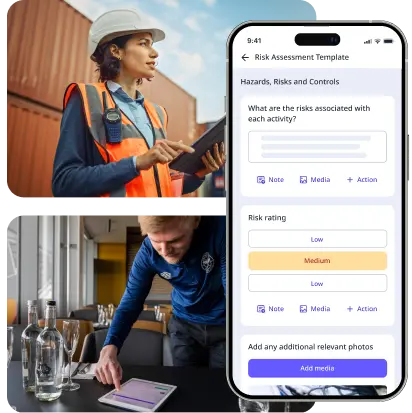What is an Event Planning Checklist?
An event planning checklist is a comprehensive organizational tool that serves as a roadmap for successfully executing any type of event, from small meetings to large-scale occasions. This kind of checklist breaks down complex event planning into manageable steps and covers crucial aspects of planning.
Having a systematic approach helps event planners ensure nothing is overlooked, maintain timelines, delegate tasks effectively, and track progress while reducing stress and potential last-minute complications.
Importance
Using a structured checklist for event planning is important, as it essentially acts as a central reference point that helps maintain control over complex logistics, budget allocation, and timeline management while reducing stress and potential errors. It also enables effective delegation of responsibilities among team members, provides clear accountability, and helps track progress throughout the planning process.
With better visibility and recordkeeping, event management processes become more streamlined and ensure all essential elements of an event are addressed in a timely manner.
What to Include in an Event Planning Checklist
The items included in an event planning checklist vary on the scale, type, and schedule of an event. Bigger events need extensive planning that smaller events may not need. However, it is crucial to include core elements such as:
Pre-Event Arrangements
Establishing event plans and arrangements beforehand helps create a clear goal for how the event will turn out. Additionally, having a definite idea of the event sets financial parameters to ensure there is enough budget to create the event in mind. In a checklist, this means including elements such as:
- Event goals and objectives
- Event type and format
- Target audience
- Financial planning
Logistics and Infrastructure
After the initial goalsetting, the next important thing to consider is where the event will take place and how guests will be accommodated during the event. This typically includes:
- Venue details
- Accessibility of the venue
- Food services
- Accommodation arrangements
- Event designer or stylist plans
Staffing
Another important facet of an event planning checklist is sourcing the right staff. This largely depends on the type of event and may require a selective hiring process, especially for higher end occasions. It’s important to take note of factors such as:
- Dress code
- Training
- Specific responsibilities during the event
- Knowledge of protocols in place
Safety and Emergency Procedures
Before setting up the things needed for the event proper, there should be safety and emergency plans in place. This should be included in the checklist to ensure that the necessary event risk management strategies and procedures are within the venue and delegated across the event staff. This typically includes:
- Emergency plan outline (for fire, medical, security, and natural emergencies)
- Contacts for emergency services
- Evacuation routes
- First aid and medical assistance equipment
Event Program and Entertainment
Once the pre-event plans are completed, it is also essential to include a section for the event itself. The items included in this section would depend on the type and nature of the event, but common things to include are:
- Event program outline
- Sign up or registration
- Sound checks and other media checking
- Scheduling
- Briefing of entertainment speakers or performers
Post-Event Processing
Arranging post-event processing is also important, as this can highlight any issues that arose during the event proper and act as a reference for event planners in the future. It typically includes:
- Feedback (from guests and staff alike)
- Final bill tallies
- Inventory management
- Debriefings
How to Use an Event Planning Checklist
To maximize the features of an event planning checklist, it is crucial to know how to use the template properly. Here is a quick guide on using an event planning checklist:
- Fill out the event planner details and include the proper contact information to ensure coordination can be established properly throughout the planning process.
- Provide the necessary information for the pre-event section. Be as specific as possible, especially for the quantity of equipment needed and other logistical concerns to prevent confusion down the line.
- Fill out the section for the event proper and add other items as necessary depending on the needs of the event.
- Conduct post-event debriefs and collate feedback to identify what improvements can be made and how the people involved felt about the event. Send a token of appreciation where it is needed.
- Update the checklist as often as needed to improve the quality of planning and ensure the success of the event across different planning stages.
- Complete the checklist with a sign-off.
To give you a better understanding, here is a sample of a completed event planning checklist:
FAQs about Event Planning Checklists
How far in advance should I start using an event planning checklist?
How often should an event planning checklist be reviewed and updated?
What are common mistakes to avoid when using an event planning checklist?




